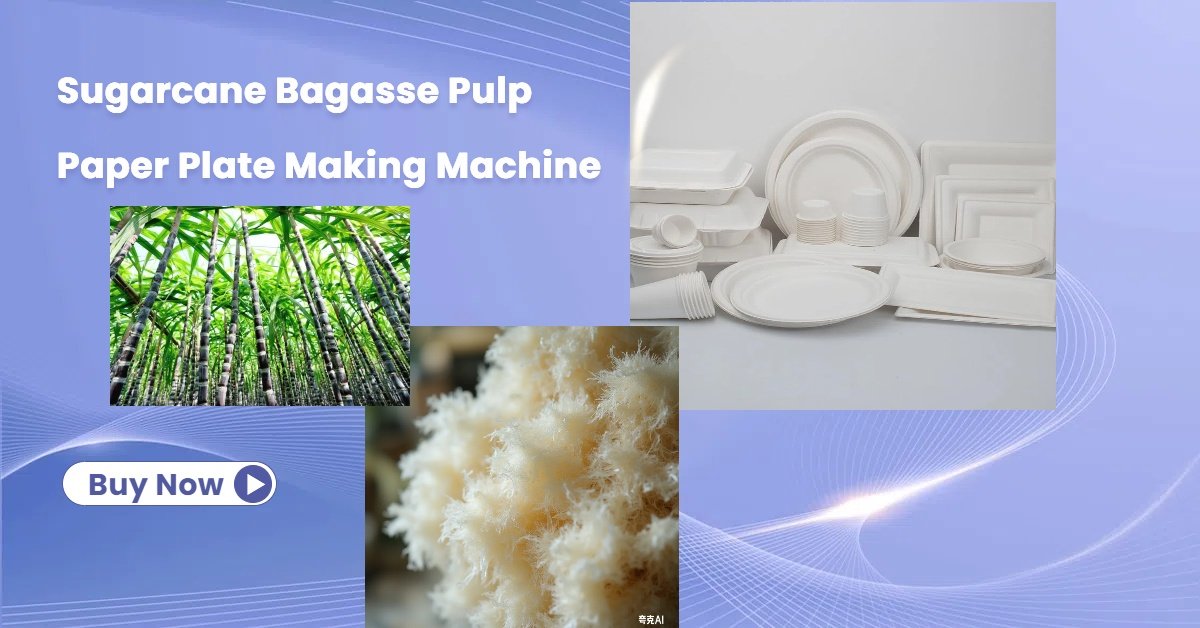Sugarcane Bagasse Pulp Paper Plate Making Machine Price varies based on model and capacity. The price includes sugarcane bagasse pulp machine(chemical mechanical pulp) and paper plate making machine(manual or automatic). Large industrial lines are with advanced molding and drying systems. Price fluctuates with raw material costs and automation level.
Sugarcane Bagasse Pulp Paper Plate Making Machine represents a cutting-edge innovation in the field of sustainable packaging technology. This advanced industrial equipment specializes in transforming agricultural waste generated from sugarcane processing into high-quality paper plates through a series of integrated mechanical and chemical processes. By leveraging bagasse, a fibrous residue left after sugar extraction, the machine addresses both environmental and economic challenges associated with traditional paper production methods.

The Sugarcane Bagasse Pulp Paper Plate Making Machine represents a cutting-edge innovation in the field of sustainable packaging technology. This advanced industrial equipment specializes in transforming agricultural waste generated from sugarcane processing into high-quality paper plates through a series of integrated mechanical and chemical processes. By leveraging bagasse, a fibrous residue left after sugar extraction, the machine addresses both environmental and economic challenges associated with traditional paper production methods.
The operational principle of the machine begins with bagasse collection and pretreatment. Raw bagasse undergoes pulping, a process that involves mechanical disintegration and chemical treatment to separate fibers from non-cellulosic components. The resulting pulp mixture is then screened, refined, and diluted to achieve optimal consistency for plate formation. A key feature of this technology lies in its ability to utilize a closed-loop water recycling system, minimizing wastewater discharge and reducing overall water consumption by up to 60% compared to conventional papermaking processes.
The plate molding process employs a combination of vacuum forming and hot pressing techniques. Pulp slurry is evenly distributed onto a metal mold, where vacuum suction removes excess moisture, shaping the material into plate contours. Subsequent hot pressing at temperatures ranging from 120°C to 180°C ensures dimensional stability and enhances mechanical strength. This dual-stage molding mechanism allows for the production of plates with thicknesses ranging from 0.5mm to 2.0mm, catering to diverse applications such as food service, catering, and disposable tableware.
Environmental sustainability is a core tenet of this machine’s design. By diverting bagasse from incineration or landfill, the equipment mitigates methane emissions and deforestation pressures associated with virgin wood pulp sourcing. Life cycle assessments indicate that bagasse-based plates reduce carbon footprints by 40% compared to petroleum-derived plastics, aligning with global circular economy objectives. Additionally, the machine’s energy efficiency is optimized through heat recovery systems, which capture steam generated during drying to power auxiliary processes.
Market adoption of this technology is gaining momentum in regions with robust sugarcane industries, particularly in South Asia and Latin America. With rising consumer demand for compostable packaging and stringent regulations on single-use plastics, bagasse pulp plates offer a cost-competitive alternative to conventional materials. Technical advancements in mold customization further expand product versatility, enabling the production of microwave-safe, grease-resistant plates with intricate designs.
In conclusion, the Sugarcane Bagasse Pulp Paper Plate Making Machine embodies a paradigm shift in industrial ecology. Through its synergistic integration of waste valorization, energy efficiency, and precision engineering, this equipment not only addresses the global imperative of waste reduction but also pioneers a viable pathway for the commercialization of circular economy technologies. As sustainable packaging transitions from niche to mainstream, this machine stands as a testament to the transformative potential of agro-industrial symbiosis.
If you have any needs , please fill out the form below and we will contact you as soon as possible.